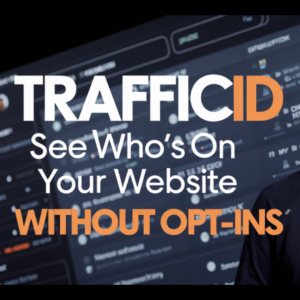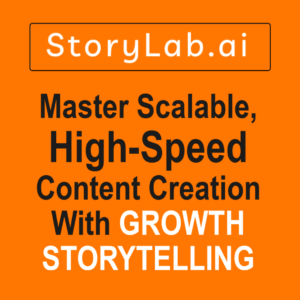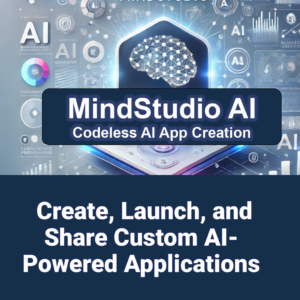Meta, formerly known as Facebook, has been a leader in digital advertising for years. With its huge user base and smart targeting tools, it has become a top choice for marketers wanting to reach their audience effectively. Recently, Meta announced big updates to its AI ad system.
These updates aim to make campaigns more customizable and improve conversion rates. They will roll out over the next year and include new ways to measure, attribute, and integrate campaigns. For marketing pros and business owners, understanding these changes is key to staying competitive in digital advertising.
The Evolution of Meta’s Advertising Platform
Meta’s advertising platform has come a long way. At first, it offered basic targeting based on demographics and interests. Over time, it added advanced features like lookalike audiences, dynamic ads, and retargeting. The latest updates to its AI ad system are a big leap forward. They use cutting-edge technology to deliver even more precise and effective advertising solutions.
Why These Updates Matter for Marketers
In today’s fast-paced digital world, marketers need tools that help them stay ahead. Meta’s AI ad system updates offer new ways to better communicate value and achieve more tailored results. By understanding and using these changes, marketers can optimize their campaigns, improve conversion rates, and drive business growth.
Key Features of the New AI Ad System
Conversion Value Rules: A Big Change
Understanding Conversion Value Rules
One of the most exciting updates to Meta’s AI ad system is Conversion Value Rules. This feature lets businesses assign different values to various audience segments or conversions without creating separate campaigns.
For example, an advertiser can say that certain customer segments have a 30% higher lifetime value and are willing to pay more to reach them. This level of detail allows for more precise targeting and value expression, leading to more effective ad spend.
What’s in it for Advertisers
The benefits of Conversion Value Rules are many. By letting advertisers express the value of different audiences or conversions, this feature helps optimize budget allocation and improve return on investment. Advertisers can prioritize high-value customers who are more likely to make repeat purchases, maximizing the effectiveness of their ad spend. Also, this feature reduces the need for complex campaign segmentation, making ad management simpler.
Real-World Applications
In practice, Conversion Value Rules can be used in many ways. For example, a retailer can use this feature to prioritize high-value customers who have a history of making large purchases.
Similarly, a subscription-based service can target users who are more likely to renew their subscriptions. By using historical data and customer insights, businesses can create more effective and efficient advertising strategies.
Enhanced Analytics Integrations
Initial Integration with Google Analytics and Northbeam
Another key update to Meta’s AI ad system is better integration with analytics tools. At first, Meta will integrate with Google Analytics and Northbeam, providing businesses with seamless data connectivity and better campaign insights.
This integration allows advertisers to connect their analytics tools directly to Meta’s ad system through a simple API setup, enabling more precise campaign optimization.
Future Integrations: Triple Whale and Adobe
Meta plans to expand these integrations to include Triple Whale and Adobe in the future. These additional integrations will further broaden the scope of analytics tools available to advertisers, providing even more opportunities for data-driven optimization. By using these tools, businesses can gain deeper insights into their campaign performance and make more informed decisions.
How Analytics Integrations Improve Ad Campaigns
The integration of analytics tools with Meta’s AI ad system offers several benefits. By connecting their analytics tools directly to Meta’s ad system, businesses can fine-tune their campaigns for higher conversion rates and better overall performance.
This integration enables better tracking of key performance indicators (KPIs), helping advertisers identify high-performing segments and adjust their strategies accordingly.
Also, the seamless data connectivity provided by these integrations simplifies the ad management process, reducing the time and effort required to optimize campaigns.
Opt-in Attribution Setting for Incremental Conversions
What is Incremental Conversion?
Incremental conversions are those conversions that are directly due to the ad being shown, which would not have happened otherwise. This concept is crucial for understanding the true impact of advertising efforts, as it helps distinguish between conversions that would have happened anyway and those that are a direct result of the ad.
Testing and Results: A 20% Improvement
Meta’s new opt-in attribution setting for incremental conversions is designed to automatically optimize for these valuable conversions. In tests, this feature has shown to improve incremental conversions by over 20%, making it a powerful tool for advertisers. By focusing on incremental conversions, businesses can ensure that their ad spend is driving real, measurable results.
Practical Implementation for Businesses
Implementing the opt-in attribution setting for incremental conversions is straightforward. Businesses can enable this setting in Meta’s ad system and let the AI optimize their campaigns for incremental conversions. Regular monitoring and adjustments can help maximize the effectiveness of this feature, ensuring that ad spend is allocated to the most impactful areas.
Strategic Implications for Businesses
Better Communication of Business Value
The new features in Meta’s AI ad system allow businesses to more accurately convey their value propositions to different audience segments. By assigning different values to various conversions and using analytics integrations, businesses can create more targeted and effective advertising strategies. This improved communication of business value can lead to higher engagement and conversion rates, ultimately driving business growth.
Tailored Results Based on Specific Objectives
With the updates to Meta’s AI ad system, businesses can achieve more tailored results that align with their specific marketing objectives. Whether the goal is to increase sales, boost brand awareness, or drive website traffic, the new features provide the tools needed to optimize campaigns for these outcomes. By using data-driven insights and advanced targeting capabilities, businesses can create more effective and efficient advertising strategies.
Long-Term Benefits of Data-Driven Optimization
The long-term benefits of data-driven optimization cannot be overstated. By using data for better ad optimization, businesses can train Meta’s ad system to deliver improved performance over time. This continuous improvement can lead to sustained growth and success, as businesses can adapt their strategies based on real-time insights and changing market conditions.
Practical Steps to Implement Meta’s AI Ad System Updates
Setting Up Conversion Value Rules
Step-by-Step Guide
- Access the Conversion Value Rules feature: Navigate to the Conversion Value Rules section in Meta’s ad system.
- Define the value of different audience segments or conversions: Use historical data and customer insights to assign values to various segments.
- Apply these rules to your campaigns: Implement the Conversion Value Rules in your ad campaigns to optimize targeting and budget allocation.
Best Practices for Maximum Impact
- Regularly review and adjust your value rules: Monitor the performance of your campaigns and make necessary adjustments to your value rules based on real-time data.
- Use historical data to inform your value assignments: Use past performance data to make informed decisions about the value of different audience segments.
- Test and iterate: Continuously test different value assignments and iterate based on the results to optimize your campaigns.
Integrating Analytics Tools
API Setup Process
- Connect your analytics tool to Meta’s ad system: Use the provided API to link your analytics tool (e.g., Google Analytics) to Meta’s ad system.
- Ensure data is flowing correctly between the systems: Verify that data is being accurately transferred between your analytics tool and Meta’s ad system.
Leveraging Data for Campaign Optimization
- Identify high-performing segments: Use the integrated data to pinpoint audience segments that are driving the most conversions.
- Adjust your campaigns based on insights: Make data-driven adjustments to your campaigns to optimize performance and improve conversion rates.
- Monitor and analyze performance: Continuously monitor the performance of your campaigns and analyze the data to identify trends and opportunities for improvement.
Utilizing the Opt-in Attribution Setting
Enabling the Feature
- Navigate to the attribution settings in Meta’s ad system: Access the attribution settings section in Meta’s ad system.
- Opt-in to the incremental conversion optimization feature: Enable the opt-in attribution setting for incremental conversions.
Monitoring and Adjusting for Optimal Results
- Regularly monitor the performance of your campaigns: Keep a close eye on the performance of your campaigns to ensure that the opt-in attribution setting is driving the desired results.
- Make necessary adjustments: Based on the performance data, make adjustments to your campaigns to optimize for incremental conversions.
- Continuously test and iterate: Test different strategies and iterate based on the results to maximize the effectiveness of the opt-in attribution setting.
Case Studies and Success Stories
Early Adopters and Their Results
Several businesses have already started using Meta’s updated AI ad system and have reported significant improvements in their campaign performance. These early adopters provide valuable insights into the potential benefits of the new features and offer practical examples of how to implement them effectively.
Lessons Learned from Real-World Applications
The experiences of early adopters offer valuable lessons for other businesses looking to implement Meta’s AI ad system updates. By learning from these real-world applications, businesses can avoid common pitfalls and optimize their strategies for maximum impact.
Future Trends in AI-Driven Advertising
The Role of AI in Marketing Evolution
AI continues to play a key role in the evolution of marketing, offering new ways to optimize campaigns and engage with audiences. As AI technology advances, we can expect even more sophisticated tools and features that will further change the advertising landscape.
Predictions for the Next Decade
Looking ahead, the future of AI-driven advertising is bright. We can expect continued advancements in AI technology, leading to even more precise targeting, improved conversion rates, and more efficient ad spend. By staying ahead of these trends, businesses can ensure that they remain competitive in the ever-changing digital advertising landscape.
Conclusion
Recap of Key Updates
Meta’s AI ad system updates include Conversion Value Rules, enhanced analytics integrations, and an opt-in attribution setting for incremental conversions. These features are designed to improve campaign customization and conversion rates, providing businesses with powerful new tools to achieve better results.
Final Thoughts on Meta’s AI Ad System
These updates represent a big step forward for Meta and its advertisers. By embracing these changes, marketers can stay ahead of the curve and continue to thrive in the competitive digital advertising space. With the right strategies and tools, businesses can use Meta’s AI ad system to drive growth and achieve their marketing goals.
FAQs
What are Conversion Value Rules?
Conversion Value Rules let businesses assign different values to various audience segments or conversions without creating separate campaigns. This feature enables more precise targeting and value expression.
How do analytics integrations improve campaign performance?
By connecting their analytics tools directly to Meta’s ad system, businesses can fine-tune their campaigns for higher conversion rates and better overall performance. This integration allows for more accurate tracking of key performance indicators (KPIs), enabling advertisers to identify high-performing segments and adjust their strategies accordingly.
What is incremental conversion?
Incremental conversions are those conversions that are directly due to the ad being shown, which would not have happened otherwise. This concept is crucial for understanding the true impact of advertising efforts.
How can businesses implement the opt-in attribution setting?
Businesses can enable the opt-in attribution setting in Meta’s ad system and let the AI optimize their campaigns for incremental conversions. Regular monitoring and adjustments can help maximize the effectiveness of this feature.
What are the benefits of data-driven optimization?
Data-driven optimization allows businesses to train Meta’s ad system to deliver improved performance over time. This continuous improvement can lead to sustained growth and success, as businesses can adapt their strategies based on real-time insights and changing market conditions.
What are the future trends in AI-driven advertising?
The future of AI-driven advertising is bright, with continued advancements in AI technology leading to even more precise targeting, improved conversion rates, and more efficient ad spend. By staying ahead of these trends, businesses can ensure that they remain competitive in the ever-changing digital advertising landscape.















